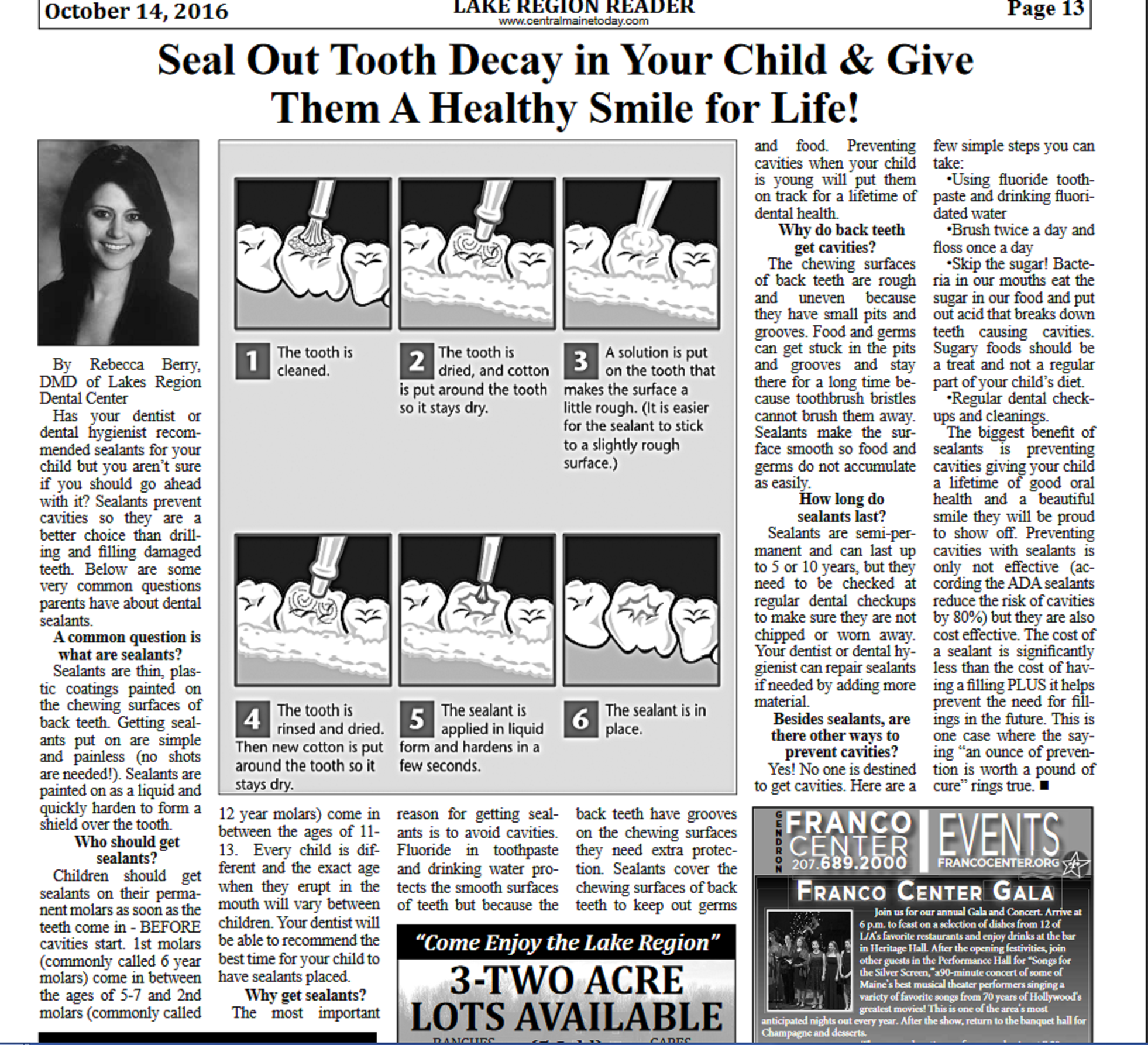Has your dentist or dental hygienist recommended sealants for your child but you aren’t sure if you should go ahead with it? Sealants prevent cavities so they are a better choice than drilling and filling damaged teeth. Below are some very common questions parents have about dental sealants.
A common question is what are sealants?
Sealants are thin, plastic coatings painted on the chewing surfaces of back teeth. Getting sealants put on are simple and painless (no shots are needed!). Sealants are painted on as a liquid and quickly harden to form a shield over the tooth.
Who should get sealants?
Children should get sealants on their permanent molars as soon as the teeth come in - BEFORE cavities start. 1st molars (commonly called 6 year molars) come in between the ages of 5-7 and 2nd molars (commonly called 12 year molars) come in between the ages of 11-13. Every child is different and the exact age when they erupt in the mouth will vary between children. Your dentist will be able to recommend the best time for your child to have sealants placed. Read our blog about when to expect your child’s adult teeth to come in.
Why get sealants?
The most important reason for getting sealants is to avoid cavities. Fluoride in toothpaste and drinking water protects the smooth surfaces of teeth but because the back teeth have grooves on the chewing surfaces they need extra protection. Sealants cover the chewing surfaces of back teeth to keep out germs and food. Preventing cavities when your child is young will put them on track for a lifetime of dental health.
Why do back teeth get cavities?
The chewing surfaces of back teeth are rough and uneven because they have small pits and grooves. Food and germs can get stuck in the pits and grooves and stay there for a long time because toothbrush bristles cannot brush them away. Sealants make the surface smooth so food and germs do not accumulate as easily.
How long do sealants last?
Sealants are semi-permanent and can last up to 5 or 10 years, but they need to be checked at regular dental check ups to make sure they are not chipped or worn away. Dr. Berry and her team can repair sealants if needed by adding more material.
Besides sealants, are there other ways to prevent cavities?
Yes! No one is destined to get cavities. Here are a few simple steps you can take:
Using fluoride toothpaste and drinking fluoridated water
Brush twice a day and floss once a day. Read our blog on tips to get your child to brush/floss.
Skip the sugar! Bacteria in our mouths eat the sugar in our food and put out acid that breaks down teeth causing cavities. Sugary foods should be a treat and not a regular part of your child’s diet.
Regular dental check ups and cleanings.
The biggest benefit of sealants is preventing cavities giving your child a lifetime of good oral health and a beautiful smile they will be proud to show off. Preventing cavities with sealants is only not effective (according the ADA sealants reduce the risk of cavities by 80%) but they are also cost effective. The cost of a sealant is significantly less than the cost of having a filling PLUS it helps prevent the need for fillings in the future. This is one case where the saying “an ounce of prevention is worth a pound of cure” rings true.
If you have any questions on sealants- we are here to help! Give us a call at 207-465-7300 or send us a note here to call you back.
Our goal for is all our patients to keep their teeth for life!

